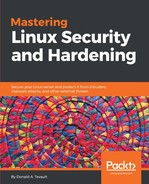For any given Linux system, you'll have at least two boot options. You'll have the option to boot normally and the option to boot into recovery mode. Red Hat-type and Ubuntu-type operating systems are unique, in that they don't overwrite the old kernel when you do an operating system update. Instead, they install the new kernel along with the old one, and all the installed kernels have their own boot menu entries. On Red Hat-type systems, you'll never have more than five installed kernels because once you have five kernels installed, the oldest kernel will automatically get deleted the next time a new kernel is available in a system update. With Ubuntu-type systems, you'll need to manually delete the old kernels by running sudo apt autoremove.
You might also have a dual-boot or a multiboot configuration, and you might want for only certain users to use certain boot options. Let's say that you have a system with both Windows and Linux installed, and you want to prevent certain users from booting into either one or the other. You can do that by configuring GRUB 2, but you probably won't. I mean, a password and user account are required for logging in to an operating system anyway, so why bother?
The most realistic scenario I can think of where this would be useful would be if you have a computer set up in a publicly accessible kiosk. You would surely not want for the general public to boot the machine into recovery mode, and this technique would help prevent that.
This technique works mostly the same on both Red Hat-type and Ubuntu-type distros, with only a few exceptions. The major one is that we need to disable the submenu on the Ubuntu machine.
